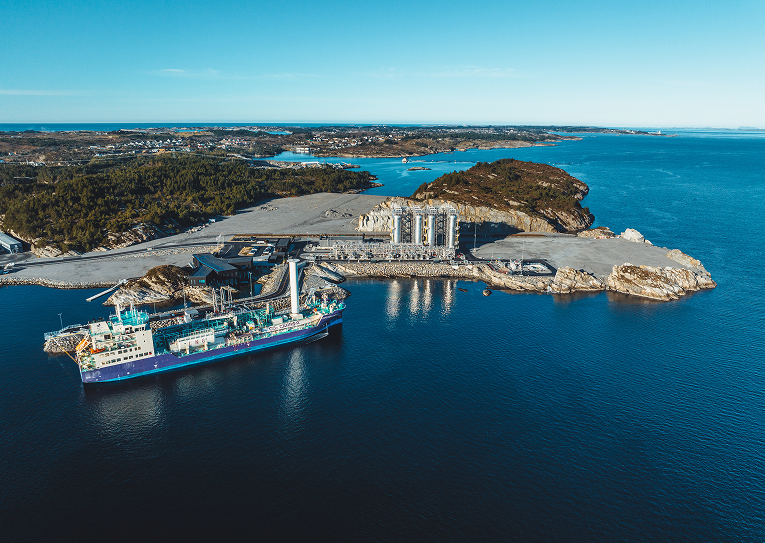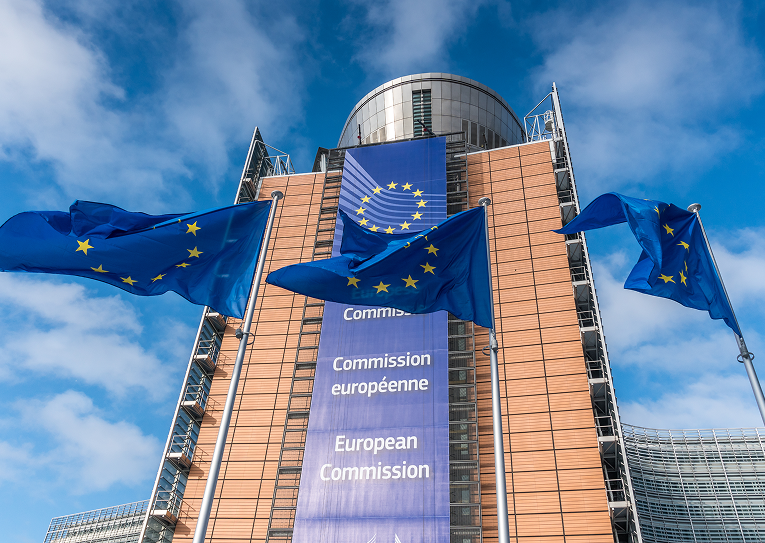Emmanuel Combe, economist, Professor at Paris 1 Panthéon-Sorbonne University, associate professor at Skema Business School, former Vice-President of the French Competition Commission (2012-2022), Aurélien Hamelle, Managing Director - Strategy and Sustainability at Total Énergies, and Faustine Viala, partner at Willkie Farr & Gallagher and head of the Competition & Antitrust department in Paris, took part in a discussion which revealed some critical developments. What are the likely tipping points?
The challenges generated by the energy transition process call for increased cooperation between companies, including competitors, which competition law may not allow. How should we deal with these developments?
Aurélien Hamelle: We operate in an industry that has a long tradition of partnership. Historically, we support very substantial and risky investments, both from an industrial and a geopolitical point of view, and we are never alone when developing a project. We are therefore always in a joint venture, with three or four partners in a given field, and our participation is a minority one. The same applies to very large renewable projects, mainly offshore wind, very capex intensive and with significant development risks.
Sustainability issues must be handled differently, as they require much more industrial cooperation and economic development.
Aurelien Hamelle
Managing Director - Strategy and Sustainability at Total Énergies
This partnership culture is very strong and we are therefore well organised to manage such risks. In terms of competition rules, this consists of multiple lists of “do’s and don’ts”, very useful for non-lawyers when it comes to knowing what can be done, what can be said, what information can be shared during a meeting or at a conference. We use confidentiality agreements and “clean teams” in our companies’ development projects.
When sustainability issues emerged, they were integrated into this body of rules and practices. Nevertheless, these must be handled differently, as they require much more industrial cooperation and economic development. Whether it is CO2 capture, green hydrogen or low-carbon electricity, there is no business model, or this model is in the process of emerging. Cooperation will make it possible to lower purchasing prices, to reach an agreement on an economically realistic selling price. Cooperation allows the model to exist. And that is why, in my opinion, sustainability issues raise new questions. Agreement is not the most neutral word in competition law and so we must act with great rigour to move forward in compliance with the existing rules.
As a lawyer, how do you approach the implementation of these partnerships with your clients?
Faustine Viala : What Aurélien says, I notice in many companies, even though they are very mature, but sincerely worried when it comes to defining how far they can go in this type of cooperation.
The tendency in companies is to consider that since progress in sustainability is virtuous, there is a need to go as far as possible. And there is the idea that the legal framework must allow this. However, the rules of competition law must apply and must not, on the face of things, be limited by the objective of sustainability.
For the past two years, we have had more targeted texts, particularly from the European Commission, with horizontal guidelines on sustainability agreements. Nevertheless it is not clear today whether we can restrict competition on the grounds that this is supposedly virtuous from a sustainability standpoint.
The authorities, in particular the French Competition Authority, are inviting companies to come and see them to work together on their projects. Companies are still very reluctant because they feel that the limits have not been pushing far enough and that these sustainability goals, or even innovation in sustainability or efficiency gains in sustainability, are not an excuse to go a little further in cooperation between competitors.
It is not clear today whether we can restrict competition on the grounds that this is supposedly virtuous from a sustainability standpoint.
Faustine Viala partner, Willkie Farr & Gallagher
How can we assess the limit between a partnership that is virtuous and good for competitiveness and innovation, and an agreement which restricts competition?
Emmanuel Combe : The situation is quite new. Firstly, because sustainable development requires companies to comply with new legal obligations (for example in terms of emissions). Companies are also facing the challenge of radical innovation. This situation is therefore raising specific questions, especially in terms of risk taking, the famous “first mover disadvantage” – I will come back to this. Finally, we must take into account the rather contradictory behaviour of consumers who say they want green without always being willing to pay the price.
We are therefore in a very new legal and economic context when it comes to these subjects. However, as you know when assessing in law the degree of seriousness of an allegedly anti-competitive agreement, the economic and legal context must be taken into account. This does not mean that the context justifies all behaviours. But it does make it possible to qualify the anti-competitive agreement as a restriction by object or by effect, which is not the same thing.
For me, the line is quite clear: we must always look at what the objective is, the intention behind the agreement. Two polar cases are possible. The first is an agreement that aims to do less than the companies would have done had they been in competition. The agreement is therefore not virtuous. This in fact involves condemning agreements designed to hinder the environmental transition process. Many examples exist, such as the AdBlue case, the floor coverings affair or the trucks cartel case related to Euro6 standard. The anti-competitive agreement consisted of not communicating on environmental variables or not anticipating the standard and turning this into a competitive advantage.
The competition authorities need to go beyond this one single approach. It is indeed based on the assumption that the consumer wants sustainability. That is to say, that actors in this market supposedly make a spontaneous offer of sustainability, as this is a competitive argument. This is however not always the case: the consumer is not necessarily asking for ‘green’ or is not willing to pay the price. An agreement can therefore be beneficial if it makes it possible to meet consumer expectations in terms of sustainable development.
Therefore, this leads to the second polar case of an agreement, which is somewhat virtuous: it will allow real progress to exist on an environmental level, despite the passivity of the consumer.
This is the example of the decision of the Dutch competition authority, known as Chicken of tomorrow, named after a set of standards on animal welfare. This was an agreement reached between all chicken distributors and producers to improve animal welfare. The authority did not conclude that the conditions were met to grant an exemption for this anti-competitive but animal welfare-friendly agreement. Nevertheless, this decision is very interesting because it has provided useful guidance for the future evaluation of sustainability initiatives involving cooperation between competitors.
The agreement nevertheless represents a considerable risk. On these subjects, the goal is to achieve sustainability. But the economic models do not exist or are embryonic. And the authorities are very conservative at the moment. It is therefore unlikely that the first to launch will be rewarded.
E. C. : This indeed brings the company up against the famous “first mover disadvantage”: why launch something only to bear all of the risk in the event of failure? An agreement to set a price on market launch, when there are high fixed costs, can then be an effective (albeit inherently anti-competitive) way to make progress on sustainability. This is the meaning of the Shell/Total Energies decision in Netherlands.
A. H. : The context for having sustainability considerations taken into account by competition law and policy is, I think, clearer today than five or ten years ago, with the guidelines of the European Commission. The application nevertheless remains full of uncertainty.
One good counter-example is that of the ACM, the Dutch competition authority, mentioned by Emmanuel, relating to the Aramis project. This involves the joint development by Total Energies and Shell of new CO2 capture and transport infrastructure for its offshore storage. In this case, public policy and the agreement are linked.
A European framework exists to reduce CO2 emissions. For this to work, you have to put a price on the ton of CO2, an externality that, until now, was free. And it is necessary for this price to be high enough for CO2 capture and storage projects to be viable. However, until now, even when this price peaked in Europe, at 100 euros, it was not enough, the target value being between 150 and 200 euros.
The ACM, in authorising the agreement between our two companies to set a sale price for one part of the capacity, made the Aramis project possible. Without this decision, the project would not have been possible.

Is it a competitiveness issue for the European Union nevertheless?
A. H. : For the European Union, this is a competitiveness issue because this type of project is much less expensive to carry out in the United States than in Europe. For 50 years, CO2 has been used there to boost oil production and they are lucky enough to have natural CO2 reservoirs on land or in shallow waters. Investments in certain types of infrastructure have therefore already been made and those to be carried out are on a lower level.
Reducing CO2 emissions is a global challenge. Regardless of where the reduction takes place, it therefore benefits all of humanity. Economically, it is therefore rational to go where it is cheaper to achieve. Without a clear framework, without genuine implementation in Europe, the counterfactual is that these projects are likely to be carried out elsewhere than in Europe.
Are the current criteria for analysing agreements adapted to these issues?
F. V. : This is without doubt the fundamental point. One of the four criteria assessed by the European Commission in its analysis of sustainability agreements between competitors consists of looking at the impact of the agreement on the relevant market. However, for the type of agreement mentioned by Aurélien, which engages European competitiveness and sustainability, it is the impact on the global market that should be measured. An approach focused solely on the European product market or the national market does not work. Behind this, it is in fact a matter of industrial policy, an impulse to go beyond what can be addressed as things currently stand by this system of criteria for analysing an agreement between competitors. Our clients do not understand that there has been no progress on this point, precisely when it comes to sustainability.
E. C. : Adding instruments to address sustainability agreements is not useful. Rather, the question is whether the authorities are prepared to change their application in the light of current challenges.
On the first criterion for the exemption of an anti-competitive agreement, namely “contribution to technical and/or economic progress”, companies may have genuine arguments to make. On the criterion of necessity, this is also the case: without agreement, the project would not be carried out and the agreement is therefore necessary in order to achieve the objective of sustainability.
I have more doubts about the other two criteria. Regarding the requirement to pass-on to consumers the benefits resulting from the agreement: which consumer are we talking about? When we talk about CO2 emissions, the benefit is indeed universal. It is therefore necessary to evolve and to make a broader assessment of this point. We can act in this manner geographically, and we can also do it by taking into account future generations. Finally, the last criterion is the most problematic for me. It requires that competition not be eliminated in a substantial part of the market. However, if the objective is to force the consumer to change, everyone must at a given moment be in agreement in order for a radically new market to emerge.
There are multiple economic arguments showing that, in the absence of a regulatory or legislative initiative or an agreement, the consumer will be passive and therefore nothing will change. This does not yet seem to have been integrated into the approach adopted by the authorities.
Competition authorities are developing on sustainability and innovation. The only question is determining which cases will lead to such developments and what the scale of such developments will be.
Emmanuel Combe
economist, Professor, Paris 1 Panthéon-Sorbonne
University, associate professor, Skema Business School
So, then, what advice do you give to companies?
F. V. : When working on this type of agreement, the advice we give is to document as conscientiously as possible the objective of the agreement as and when meetings are held, the reasoning, the process, to justify entering into something virtuous, which defends sustainability, which is pro-competitive. It must be possible for all this to be used before an authority.
E. C. : Basically, what we must be seeking to demonstrate here is an efficiency gain. However, companies are not used to doing this, because authorities have always rejected this type of approach in other areas such as mergers. But in the long term, I think that the authorities will go and look at companies’ internal documents, in particular the business plans…
A. H. : For this, it is essential that those first concerned, the companies, have a vision of the evolution of their market. Without a vision, it is impossible to make a transition possible.
Take maritime transport. Until recently, the world’s largest shipowners did not have a common vision on the right energy vector to choose for decarbonisation. We were therefore unable to invest, because we were not capable of making fuel chains profitable without logistical uniformity in production, transport and bunkering. Alignment is essential because there are no global regulations in this area.
Recently, their choice converged towards liquefied natural gas: the market is visible. This convergence is essential, this is the fourth criterion that Emmanuel and Faustine mentioned. And I would come back to the counterfactual as, without this, we do not know how to create new markets.
Is it not the question of the articulation between competition policy and industrial policy that arises?
E. C. : Within the current legal framework, what will really make it possible to make progress in terms of sustainability, with regard to agreements, is to make changes to criteria 3 and 4 of which we have just spoken. Nevertheless, it must be borne in mind that it will not be possible to include certain criteria in the method used to analyse agreements, I am thinking of resilience, sovereignty... I do not think that it would be appropriate to introduce into the law objectives that do not related to efficiency gains and which are, moreover, not measurable.
If a competition authority starts to have to pursue multiple objectives, I think this will change its mission and have a negative impact on its effectiveness. So what should be done? The French system seems to me to be the right one in some ways. If I take the example of merger control, this allows France’s Minister of the Economy to override a decision of the French Competition Authority and to authorise or prohibit a merger for reasons other than competition, including sovereignty, industrial competitiveness, etc.
The Draghi report highlights the vital challenges for the EU, in particular, innovation and competitiveness, and proposes ways to promote them. Are competition law and policy drivers to be activated?
A. H. : It’s not all about competition law. But there is already an important factor in European regulation which is that it is not very technologically neutral. Innovation presupposes that regulation is neutral from a technological point of view.
On competition law itself, this refers to the debate we have just had and, more specifically, to the third criterion which is that of the benefit to the consumer. In fact, an innovation policy is not necessarily favourable to the consumer, that is, it is not necessarily favourable to the price to the consumer because innovation can be - and it is, when it comes to the energy transition - more expensive.
In other words, innovation refers not to the interest of the consumer, in the short term at least, but to the interest of the citizen because the citizen actually wants us to live in a world that is cleaner and more respectful of our ecosystems. But innovation also resonates with the interest of workers, because the existence of good, skilled and well-paid jobs presupposes being able to produce things that we sell more expensively.
Sovereignty, sustainability, military self-defence capability are themselves major issues that cannot be ignored when they come up against competition law or policy. Politics must be bring back into these types of decisions, even if this is not the traditional role of the competition authorities.
E. C. : The barriers to innovation are not primarily found in the competition rules. And it is a great overstatement to claim that our technology gap can be explained by the fact that we prevented 55 mergers within the European Union over the last 20 years, such as that of Alstom and Siemens. The real subject, documented a thousand times, is that of the absence of a capital market and the difficulty of financing radical innovation with venture capital. Because Europe’s disengagement is not primarily about incremental innovation but about disruptive, radical innovation.
Competition policy plays a minor role in this disengagement but it can help to bridge it through two very important levers. The first lever, which already exists and should be further developed, consists in avoiding overly stringent rules on state aid for everything to do with upstream research and development funding. This is what the European Commission has been doing since 2018 with IPEC, Important Projects of Common European Interest. To achieve radical innovations, there is a need to bring together a large number of companies, competitors and others, so that they can work together on very large cross-sector projects, while benefiting from public funds.
The second driver, not considered at all until now, would be for the competition authorities to recognise that a merger does not only have the effect of raising prices, but that it also makes it possible to achieve static or dynamic efficiency gains, that is to say in terms of innovation.
A company could quite well want to carry out a merger in order to obtain this type of benefit, in order to invest this in the development of its research. For now, this argument is not considered to by the authorities, either in France or within the European Union. Yet no clear relationship has been established, in either direction, between concentration and innovation. So we need to be empirical. Everything depends on the market configuration.

F. V. : Being more flexible in terms of State aid at the European level is essential because our competitors, China and the United States, are clearly taking this approach. This cumbersomeness is found even when the European Union implements the Foreign Subsidy Regulation, which is supposed to protect the European market from foreign State aid. This system, which was supposed to trigger just a few notifications only, has already generated more than 100 in less than one year, including notifications made by French companies buying European companies. While the Commission has set up teams dedicated to the FSR process, some adjustments and flexibility in the implementation of the instrument could certainly avoid a certain administrative burden for European companies.
Moreover, regarding the use of political decision-making as a last resort, for agreements, this would be a good system. But, for merger controls, where it already exists, it has only been used once. So I wonder if there is work to be done to make this less exceptional even before expanding it. And I share your two opinions on the point that this should not be the responsibility of the competition authorities.
Finally, the tools at our disposal can make it possible to move into the field of gains in efficiency. One recent example shows this, albeit outside of the European Union: the Vodafone/Three decision, taken by the UK’s Competition and Markets Authority (CMA), but with a legal framework very similar to ours. By this decision, the CMA approved the reduction from 4 to 3 telecoms operators in the UK subject to guaranteeing efficiency gains in operations via a substantial commitment by the purchaser to invest in the network. So it is possible.
Several economists defend the concept of dynamic competition. This focuses on the dynamic process of rivalry between companies, rather than on the static state of the market at any given time. This concept is closely linked to innovation as it recognises that competition also includes the creation of new products, services and technologies. This must be used
As a former member of the authority and a keen observer of the competition authority ecosystem, are you confident about the future?
E. C. : I am confident about the future: I believe that if the authorities do not proceed with this aggiornamento, they will be marginalised in the public debate, at a time of sustainable development, trade war and technological disruption. I think they are aware of this and they are moving forward on both topics, sustainability and innovation. The only question is determining which cases will lead to developments and what the scale of such developments will be.



